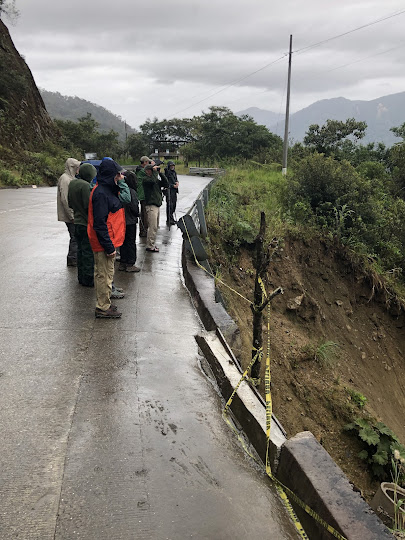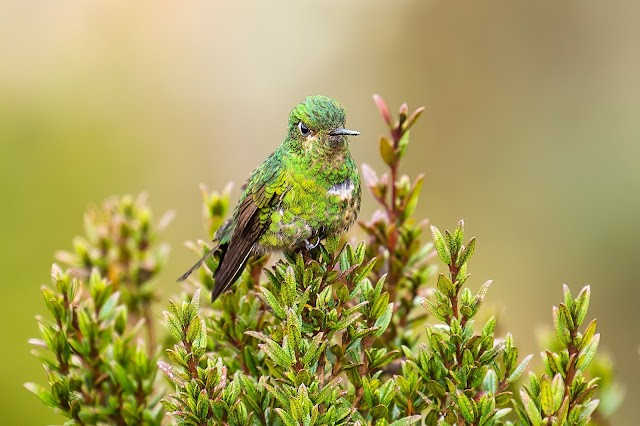Our terrific guide, Sam (“call me the endemic whisperer”) Woods (no relation, we think) was indeed superb at getting us on endemics, for which southern Ecuador is famous among those who obsess about such species. (In the pantheon of birder lunacy, endemic chasing ranks rather high.)
Endemics are defined somewhat subjectively, if not arbitrarily, to encompass a specified area. For instance, hummingbirds are endemic to the Western Hemisphere, while humans are endemic to earth, as related to the Universe. But we narrow it down for the purposes of bird chasing, and here we are after endemics (not pandemics or epidemics mind you) found in the Tumbesian region of southern Equador and northwest Peru. We don’t go into Peru, but we can see it from near our lodge, which I suppose qualifies us to run for Vice-President.
Anyway, Sam has this endemic thing down pat, with what I like to call the 3-2-1-1 formula: drive 3 hours, hike 2 miles, stand 1 hour, see 1 bird. Not always of course, sometimes we see things along the way that soften the disappointment if the final “1” of the above formula turns into “0”.
Endemics come in all shapes and sizes, bird-wise that is. Some are small but stunning:
Speaking of tits (no, really), we had noticed that Sam’s introductory bio blurb included this tidbit of info: “Sam’s unhealthy obsession for birds began with a pair of tits in a London park at age 11.” (I am not making this up.) We presume he also enjoyed the birds flying around the park. But this is clarified for the “average American”, by which I mean everyone, with the information behind the Beatles song “And Your Bird Can Sing” which refers not to one of the chickadee-like parus species (i.e. “tits”) but to Mick Jagger’s girlfriend. In Britain, hot girlfriends are called “birds”. Oh, and Sam is British.
And some birds may be valued for endemism but not looks:
But some of the endemic hummingbirds on this trip are more like common perceptions of hummers (a bird-cognoscenti term):
This guy was among a small swarm (another technical birder term) of squabbling hummers living up to the reputation given them by the Aztecs, who believed brave warriors who died in battle were resurrected as hummingbirds. Let’s hope that was true.
One of the fancier hummers, this territorialist (I’ll explain that later) species guards his food supply against all comers.
As promised, hummingbirds will be a focus of future posts, and I take comfort in hearing about 10 inches of snow and 4 degree weather at my house in Connecticut knowing that I’ll have several thousand photos to cull for the best hummer shots during the cold winter days.
And thanks to my travel mates Jay Hand, Sue Carnahan, and Curtis Smith for brainstorming blog ideas. Ciao for know.
All photos © C.S. Wood





















 Comb Duck – One question for Mother Nature: Why?
Comb Duck – One question for Mother Nature: Why?























